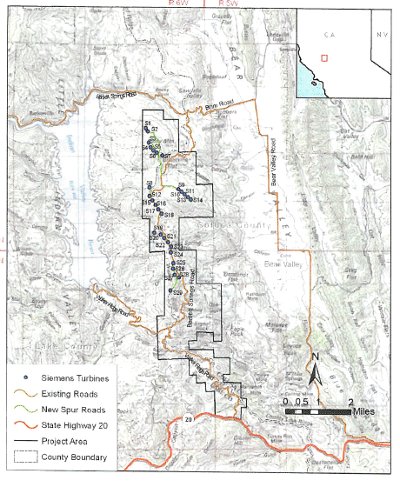- Elizabeth Larson
Governor's decision awaited on farm worker overtime bill
SB 1121, introduced this past February by state Senate Majority Leader Dean Florez (D-Shafter), would extend overtime pay to farm workers who work more than eight hours a day or 40 hours per week.
Farm workers are the only employees in California who don't receive overtime at eight hours per day or 40 hours a week, according to Florez's office. Overtime for farm workers currently starts at 10 hours per day or 60 hours per week.
The bill cleared the Assembly on a 47-26 vote on July 1, according to Florez's office.
Now, the bill's opponents and proponents are waiting to see what action Schwarzenegger will take.
“It came down yesterday,” Andrea McCarthy, a spokesman for the governor's office, said of the bill in a Wednesday interview with Lake County News. “Sen. Flores walked it down.”
McCarthy added, “The governor has yet to take a position.”
She said Schwarzenegger had 12 days from Tuesday to decide whether to sign or veto the bill.
Florez released a written statement in which he said that he hopes Schwarzenegger's immigrant experience will “give him empathy to grasp the importance of this bill to some of California’s hardest workers.”
Legislative analysis of the bill cited the California Employment Development Department's 2008 agricultural employment report, which showed that the state's agricultural labor force had at that time 372,600 workers, of which 48.6 percent had an annual family income of less than $35,000.
In 2008, according to that report, 61.8 percent of California's agricultural workers earned $10 an hour or less, 37.6 percent earned the state's $8 minimum wage, 23.8 percent earned between $10.1 and $15 an hour, 14.4 percent earned more than $15 an hour and 8.6 percent earned more than $20 per hour.
The state's June labor report showed that Lake County has 1,660 farm workers, a higher number than usual due to the harvest season.
Florez's bill has raised strong opinions both from those who believe it will help the quality of workers' lives and those who say it will hurt agriculture in California, which they say already has a mountain of expensive regulations.
Lining up against it include groups like the California Farm Bureau and the California Chamber of Commerce, the latter including the legislation is a list of “job killer” bills released in May.
On the other side are farm worker advocates, including the United Farm Workers, whose California political director Merlyn Calderon said that the bill is addressing the inequities that farm workers in the state have been subject to for decades.
Locally, Lake County Farm Bureau Executive Director Chuck March took the issue to the Board of Supervisors at its July 13 and asked them to send a letter to Schwarzenegger urging a veto, which they agreed to do.
March told Lake County News that he believes the bill will end up having negative impacts for workers and farmers alike.
“I've talked to a couple growers and basically what they would do is reduce the hours of their current employees and probably hire more,” he said.
“There's no other state that has the pay requirements that California does,” March said.
Bonnie Sears at Snows Lake Vineyard in Lower Lake said she did a brief analysis to gauge the impact of the bill on their operations.
She estimated that a staff of 100 people making $8 an hour for 60 hours per week would see an $8,000-per-week impact if 20 hours of overtime had to be paid for each worker.
To make up that $8,000 weekly difference, an employer would have to hire 35 more people and reduce the hours of the existing 100, she said.
At Snows Lake, they work a 54-hour week, and would automatically see 14 hours per week of overtime for workers, according to Sears.
“We couldn't afford to pay the difference,” she said. “We would have to hire more people.”
Sears said Snows Lake – which pays more than minimum wage – might reduce pay levels to cover some of the overtime. Another option is to ask employees to approve an alternate work week, such as four 10-hour days, which would require two-thirds of the employees to agree.
“The unintended consequences are negative to the employee,” she said.
Those unintended consequences have reportedly led to concerns among farm workers about the bill, which Calderon acknowledged.
“UFW has been very honest about the mixed reaction from workers on this particular proposal,” Calderon said. She suggested the mixed reactions are a result of “scare tactics” about reduced hours.
Calderon said about 400,000 farm workers in California move between 80,000 farms, often for short periods of time. Labor laws sometimes aren't enforced in the fields, and the UFW wants to make sure they are.
She said that more than 50 percent of farm workers are undocumented.
“This is a really vulnerable workforce and employers know that,” she said.
Calderon accused opponents of the bill of also fighting other important legislation, such as laws requiring heat protections for workers and improved sanitary requirements, using the same claims of harm to their businesses.
“In general, this is an argument that the growers have used continuously whenever laws that benefit farm workers are going to be passed,” she said.
She added, “In the end, farm workers want to have the same benefits that all other workers have in California.”
Farm worker labor laws in place for decades
A Senate bill analysis of SB 1121 explained that in 1938 Congress passed the Fair Labor Standards Act, which set statutory minimum requirements for labor laws in all states, including overtime provisions that were not extended to agricultural workers.
California first addressed the farm worker overtime issue in 1941, when it made all agricultural employees exempt from statutory overtime requirements, much as the federal government had done, the analysis said.
A guest editorial Florez wrote for the Sacramento Bee said that in 1976 California gave farm workers the right to overtime pay after 10 hours of labor a day or 60 hour of work a week.
Bob Alvarez, Florez's chief of staff, said in 1994 there was a fight in the Legislature over the eight-hour work day, but the 10-hour day held.
He believes that “a certain sense of fairness” led to the bill getting through the Legislature this year.
Meanwhile, in an attempt to share the challenges of agricultural labor, the United Farm Workers began the “Take Our Jobs” initiative.
Calderon said the campaign is meant to help Americans – especially those currently out of work and seeking employment – to take on the one million agricultural jobs currently held by farm workers without legal status.
The campaign got some high profile attention when United Farm Workers of America President Arturo Rodriguez appeared on Comedy Central's “Colbert Report” earlier this month and got Stephen Colbert to take the challenge.
Colbert hasn't shown up yet, said Calderon, however, “he committed that he would so we look forward to that.”
She said the group has had 4,000 inquiries come in, of which about 40 percent were hate mails.
Once they winnowed those down to people actually interested in getting a job, three people were placed in jobs, far short of the hoped-for one million, said Calderon.
The United Farm Workers also invited members of Congress to take the challenge, according to Calderon.
Have they gotten any response?
“Not at this point,” she said.
E-mail Elizabeth Larson at






 How to resolve AdBlock issue?
How to resolve AdBlock issue? 



